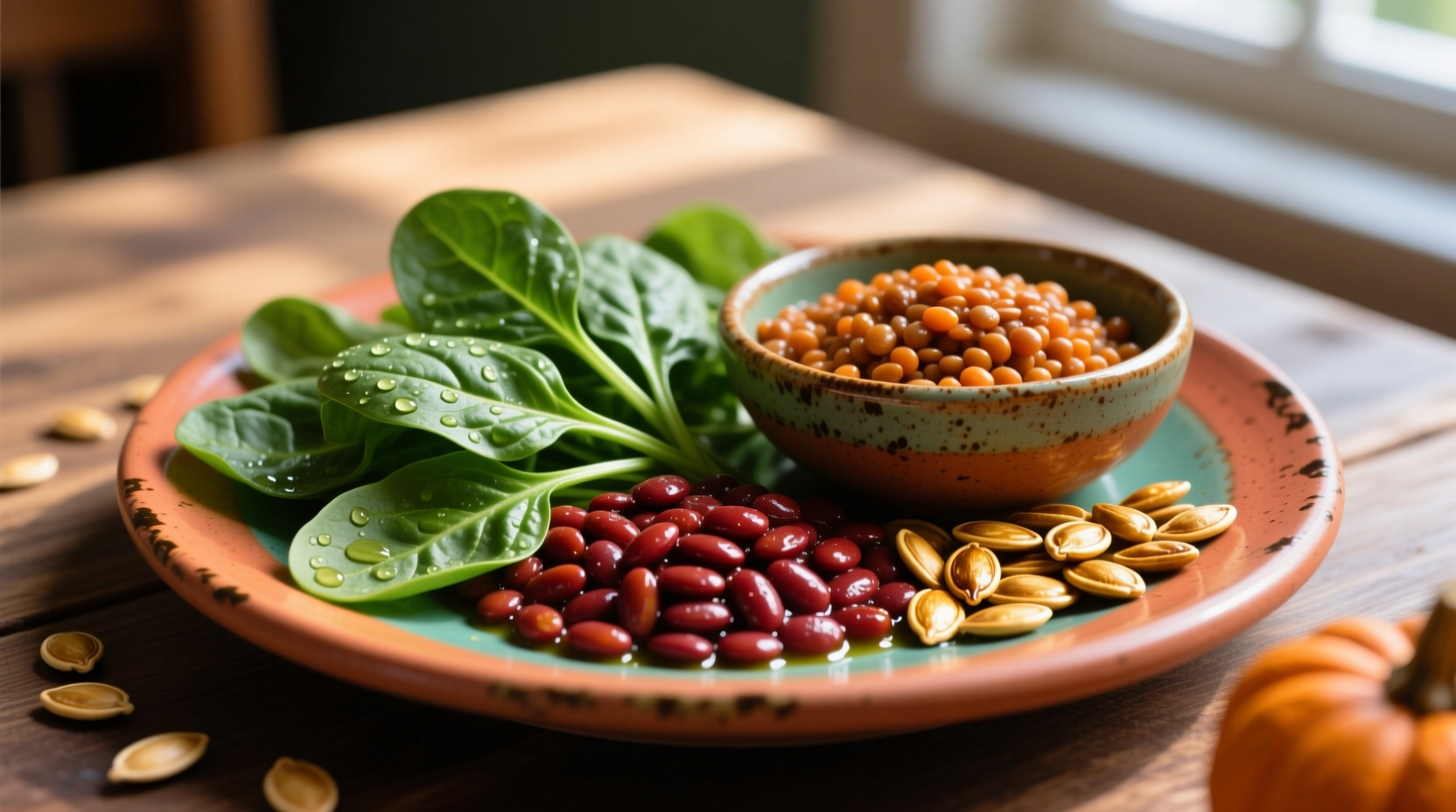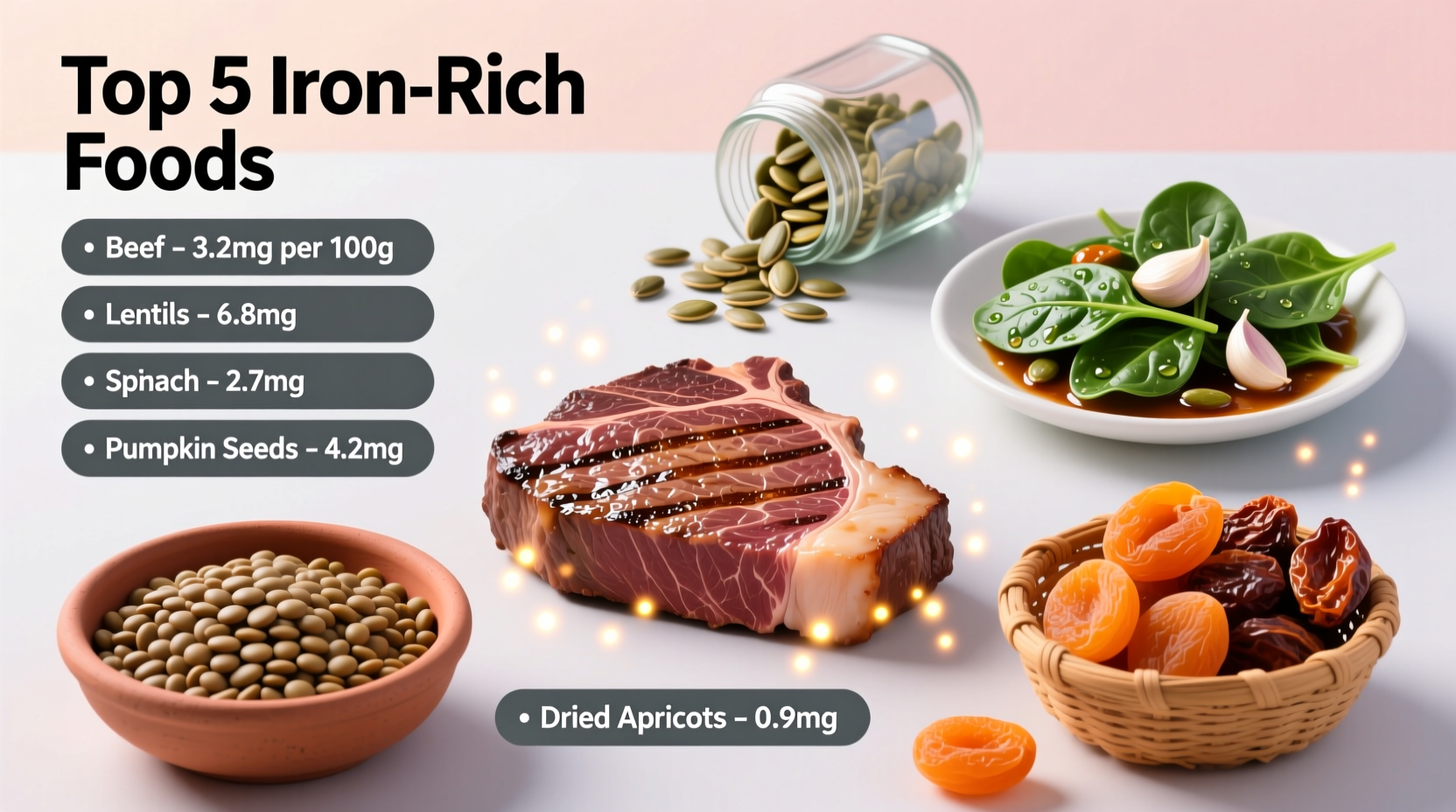Discover exactly which foods deliver the most bioavailable iron for your dietary needs. Whether you're managing anemia, following a plant-based diet, or simply optimizing your nutrition, this guide provides science-backed iron sources with practical meal integration strategies that actually work.
Understanding Iron Types: Heme vs Non-Heme
Iron exists in two primary forms with dramatically different absorption rates. Heme iron, found exclusively in animal products, delivers 15-35% absorption efficiency. Non-heme iron from plant sources and fortified foods has just 2-20% absorption. This fundamental difference explains why vegetarians need nearly double the iron intake of meat-eaters according to the NIH Office of Dietary Supplements.
| Food Source | Iron (per serving) | Iron Type | Key Absorption Factors |
|---|---|---|---|
| Liver (3 oz) | 5.2 mg | Heme | Naturally paired with vitamin A for enhanced utilization |
| Oysters (6 medium) | 4.5 mg | Heme | Zinc content supports iron metabolism |
| Lentils (1 cup cooked) | 6.6 mg | Non-heme | Pair with citrus for 3x absorption boost |
| Spinach (1 cup cooked) | 6.4 mg | Non-heme | Requires vitamin C pairing; oxalates reduce absorption |
| Pumpkin seeds (1 oz) | 2.5 mg | Non-heme | Soaking improves bioavailability |
Iron Absorption: The Critical Factor You're Missing
Simply consuming iron-rich foods isn't enough. Your body's actual iron uptake depends on strategic food combinations. The Harvard T.H. Chan School of Public Health confirms that vitamin C can triple non-heme iron absorption when consumed simultaneously. Try these proven combinations:
- Lentil soup with lemon squeeze
- Spinach salad with strawberries
- Bean burritos with bell peppers
Conversely, certain compounds significantly inhibit absorption. Calcium supplements, tea tannins, and phytates in whole grains can reduce iron uptake by 50-65%. Space these foods 2-3 hours apart from iron-rich meals for optimal results.

Diet-Specific Iron Solutions
Your dietary pattern dramatically impacts iron strategy. These targeted approaches address specific nutritional contexts:
For Vegetarians and Vegans
Plant-based eaters face unique challenges due to exclusively non-heme iron sources. The Academy of Nutrition and Dietetics recommends:
- Consume 1.8 times the standard RDA (Recommended Dietary Allowance)
- Soak beans and grains to reduce phytate content
- Use cast-iron cookware for 20% iron increase in foods
- Include fermented foods like tempeh to enhance absorption
For Pregnant Women
Pregnancy increases iron needs to 27 mg daily. Focus on heme sources first, then supplement with:
- Beef liver pâté (small portions due to vitamin A concerns)
- Clams in tomato-based sauces (vitamin C enhances absorption)
- Fortified cereals with orange slices
Iron Requirements by Life Stage
Daily iron needs vary significantly across demographics. The USDA FoodData Central shows these requirements:
- Men (19+ years): 8 mg
- Women (19-50 years): 18 mg
- Pregnant women: 27 mg
- Vegans/vegetarians: 1.8x standard requirements
- Endurance athletes: 30-70% higher needs due to foot-strike hemolysis
Practical Integration Strategies
Transform your iron intake with these chef-tested techniques that maximize nutritional value without compromising flavor:
Breakfast Solutions
Start your day with iron-rich options that beat standard fortified cereals. Try amaranth porridge with pumpkin seeds and dried apricots, or tofu scramble with spinach and tomatoes. The vitamin C in tomatoes increases iron absorption from plant sources by up to 270% according to clinical studies.
Lunch and Dinner Hacks
Incorporate iron-boosting techniques into regular cooking:
- Add white beans to pasta sauces (undetectable texture, 8g iron per cup)
- Use blackstrap molasses in marinades (3.5mg iron per tablespoon)
- Prepare chili with kidney beans and dark chocolate (cocoa powder adds iron)
When More Isn't Better: Iron Overload Concerns
While deficiency is common, excessive iron poses serious health risks. Hemochromatosis affects 1 in 200 people of Northern European descent. Symptoms include joint pain, fatigue, and abdominal discomfort. Men and postmenopausal women should avoid unnecessary supplementation. Always consult your healthcare provider before starting iron supplements, especially if you have liver disease or diabetes.
Recognizing Iron Deficiency
Early detection prevents complications. Common symptoms include:
- Pale skin and brittle nails
- Unusual fatigue and weakness
- Shortness of breath during mild activity
- Pica (craving non-food items like ice or dirt)
Diagnosis requires blood tests measuring serum ferritin, hemoglobin, and transferrin saturation. Self-treating with supplements without medical supervision can mask underlying conditions like celiac disease or inflammatory bowel disorders.











 浙公网安备
33010002000092号
浙公网安备
33010002000092号 浙B2-20120091-4
浙B2-20120091-4